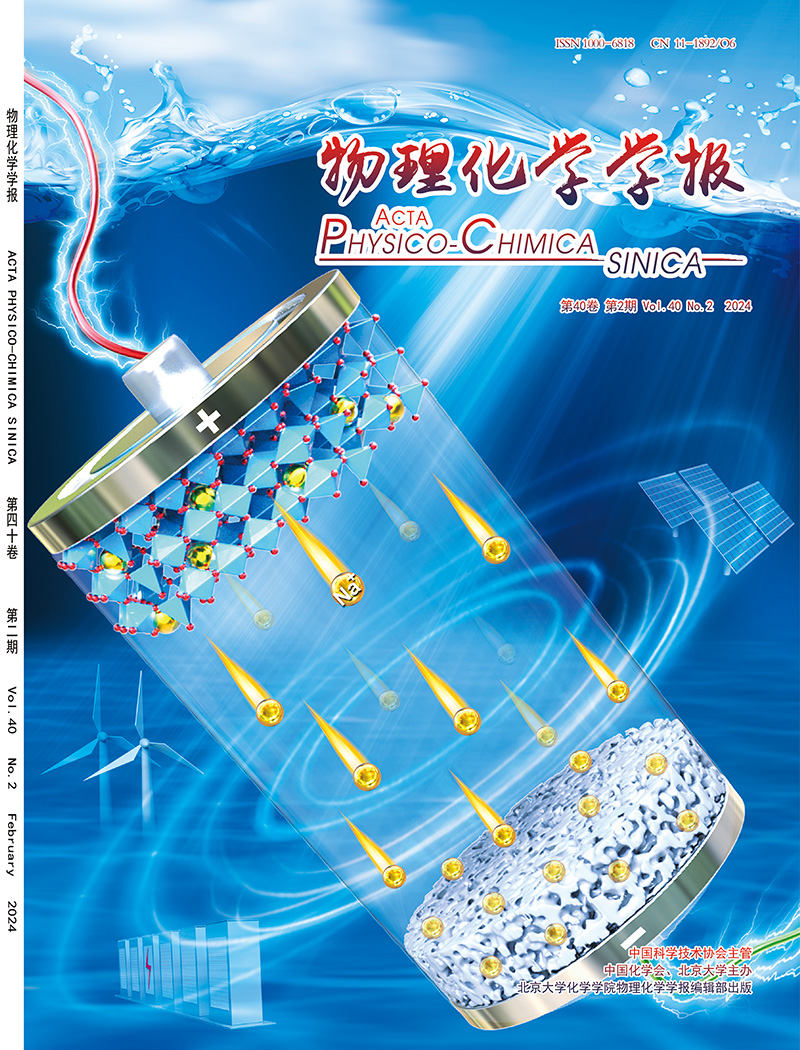Work-function-engineered Mo 4d electronic structure modulation in Mo2C MXene cocatalyst for efficient photocatalytic H2 evolution
IF 13.5
2区 化学
Q1 CHEMISTRY, PHYSICAL
引用次数: 0
Abstract
Mo2C MXene (Mo2CTx) exhibits exceptional hydrogen-evolution potential in photocatalysis due to the Pt-like electronic structure of surface Mo active sites. However, the Mo sites in Mo2CTx usually show excessively strong H-adsorption during HER, significantly limiting the intrinsic catalytic activity of Mo2CTx. To weaken the H-adsorption capacity of Mo active sites, a strategy of modulating d-orbital electron is implemented via in-situ constructing MoC-Mo2C MXene heterojunction by a work-function-induced effect. The MoC-Mo2CTx heterojunction was synthesized by in-situ conversion of Mo2C MXene into MoC via a Co-induced molten salt method, followed by coupling with TiO2 through a simple ultrasonication-assisted method to prepare the MoC-Mo2CTx/TiO2 photocatalyst. Photocatalytic tests showed that the optimal MoC-Mo2CTx/TiO2 sample achieves an excellent hydrogen production rate of 1886 μmol h−1 g−1, representing 117.9 and 3.9 fold enhancements over TiO2 and Mo2CFx/TiO2 (Mo2CFx prepared by a conventional etchant NH4F + HCl), respectively. Experimental and theoretical calculations substantiate that the work-function gradient between MoC and Mo2C MXene induces electron transfer from MoC to Mo2C MXene to weaken the H-adsorption of Mo active sites in Mo2CTx cocatalyst, thereby enhancing its HER activity. This research provides a new strategy of in-situ constructing Mo2C MXene-based heterojunction for adjusting the H-adsorption capacity of Mo active sites.

工作功能工程Mo2C MXene助催化剂中mo4d电子结构调制的高效光催化析氢
Mo2C MXene (Mo2CTx)由于其表面Mo活性位点具有pt样的电子结构,在光催化中表现出优异的析氢潜力。然而,Mo2CTx中的Mo位点在HER过程中通常表现出极强的h吸附,严重限制了Mo2CTx的内在催化活性。为了削弱Mo活性位点的h吸附能力,利用功函数诱导效应,通过原位构建MoC-Mo2C MXene异质结实现了d轨道电子调制策略。采用共诱导熔盐法将Mo2C MXene原位转化为MoC合成MoC- mo2ctx异质结,然后通过简单的超声辅助法与TiO2偶联制备MoC- mo2ctx /TiO2光催化剂。光催化实验表明,最佳MoC-Mo2CTx/TiO2样品的产氢率为1886 μmol h−1 g−1,分别比TiO2和Mo2CFx/TiO2 (Mo2CFx由传统蚀刻剂NH4F + HCl制备)提高了117.9倍和3.9倍。实验和理论计算证实,MoC和Mo2C MXene之间的功函数梯度诱导了MoC向Mo2C MXene的电子转移,从而减弱了Mo2CTx助催化剂中Mo活性位点的h吸附,从而提高了Mo2CTx助催化剂的HER活性。本研究提供了原位构建Mo2C mxen基异质结以调节Mo活性位点h吸附能力的新策略。
本文章由计算机程序翻译,如有差异,请以英文原文为准。
求助全文
约1分钟内获得全文
求助全文

 求助内容:
求助内容: 应助结果提醒方式:
应助结果提醒方式:


